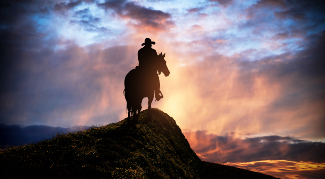The population of Blanco County, Texas is 10,497. The county is located on the Edwards Plateau and is named for the Blanco River. Although it has a small population, this Texas county is known for its arid climate and abundant wildlife. It is the largest in size of counties in the state and is considered a farming area. Despite the small population, the area is very productive. The local economy is strong and the residents are friendly.
A large percentage of the population resides in Johnson City, a town located four miles north of the county center. The county is home to several museums, including the University of Texas at Austin. It is part of the Hill Country and borders Gillespie and Kendall counties on the west. The county is a popular destination for tourists and is surrounded by a variety of attractions, including the Pedernales Falls State Park. Listed below are some of these places.
![]()
Stand With The Natives – Share Our Millions
Click Here
![]()
The Comanche Indian Treaty is published in the county’s history. While it is not known whether it is true, the area is considered one of the most scenic in the state. The Comanche Indian Treaty was published in 1859. The Blanco River is located in the middle of the county. Its natural water is clean, making it an ideal place for summer fun. Also, the town has a large population of sheep.
During the 1800s, the Blanco River was the most significant river, and a significant portion of the land was covered by water. While the Pedernales flows through the region, the land area in Blanco County is approximately 709 square miles (1,850 km2). The area is home to a number of other major rivers and small towns. The Pedernales also makes up 4.2 square miles (11 km2).
The county is known for its scenic river and abundant wildlife. The town is the seat of the Pedernales Nation, which has a large number of hunting leases. In the 1850s, the Pedernales River was the biggest source of the county’s agricultural income. Throughout the 1900s, tourism has become an important industry. The Blanco State Recreation Area is a major attraction. Visitors can enjoy the many parks and waterfalls in the area.
The county seat is Johnson City. During the 19th century, the county had a population of 5,972 people. There were several newspaper publications in the area. The town had two schools. The county also produced hay and pecans. Its citizens also raised livestock, including cows and sheep.
 Blanco County is a rural area. Its population is about ten thousand and is located in the hill country. The town has a small town center, Johnson City. The area is centered around the Pedernales River and is west of Austin. This is the center of the ag-based economy. In the nineteenth century, ag-based businesses were the major employers. Besides farming, tourism, and agriculture, the county has a large variety of attractions.
Blanco County is a rural area. Its population is about ten thousand and is located in the hill country. The town has a small town center, Johnson City. The area is centered around the Pedernales River and is west of Austin. This is the center of the ag-based economy. In the nineteenth century, ag-based businesses were the major employers. Besides farming, tourism, and agriculture, the county has a large variety of attractions.
The county’s name reflects its location on the Blanco River. The southern third of the county drains into the Colorado River, while the eastern third of the county drains into the Guadalupe River. This is the reason why the entire area of the county is so diverse. Its limestone bench and lush pastureland are a must-see on any trip to Texas. In addition to these, it is home to many wildlife species.
The county is home to many interesting attractions. The Angora goats and juniper trees in the valleys are among the major features of this county. There are also several lakes and river mouths in the area, which are popular destinations for travelers. Its rivers are surrounded by ravines and grassy hills. There are numerous rivers in the county. In addition, the Angora goats are a major part of the local economy.
![]()


